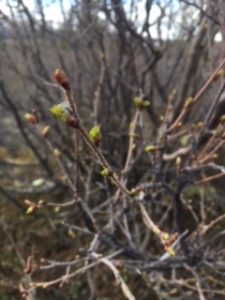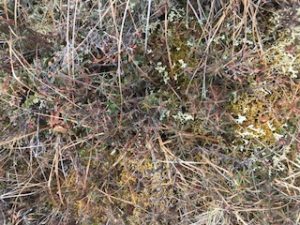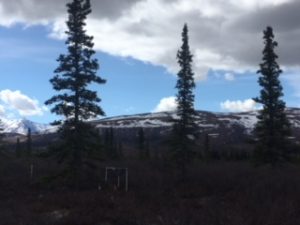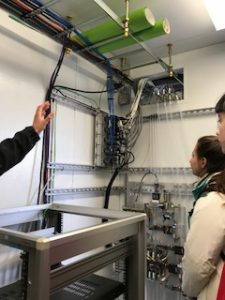Waking up this morning, knowing that our trip has come to an end was a bit sad, although, some people seemed very ready to get home. We packed our bags, packed the vans up, and headed towards Healy to get to the NEON data collection site. Once we got there, we had a tour of the phenology site that monitors three different species which are the top three species that show an abundance in this particular site.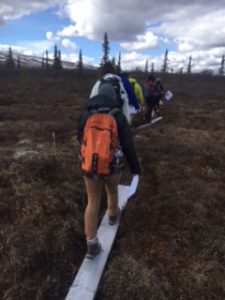 The first plant NEON data collectors look for is the Betula Nana/Glandulosa – they look at the breaking leaf buds.
The first plant NEON data collectors look for is the Betula Nana/Glandulosa – they look at the breaking leaf buds.
The second plant is the Labrador Tea – just as the Betula Nana/Glandulosa, the Labrador Tea is looked at the breaking leaf buds.
The third is the very well-known White Spruce – they check whether or not the needle buds are breaking and if so, if they are young needles.
We walked around the half mile perimeter while observing these three species. Two things that were extremely interesting that our group noticed is that how little White Spruce there were and that the Labrador Tea wasn’t as ripe compared to the Labrador Tea we have seen throughout the past week.
We then walked back to check the flux tower and hut. The flux tower measures multiple different variables such as wind speed, wind direction, in-bound and out-bound radiation, wind speed and wind direction in three dimensions, precipitation. The levels of the flux tower depend on the canopies. – each level of measurement pulls different types of validation gas and is analyzed in the hut. An example of analysis used by NEON data analysts from the measurements is to look at what concentration of water and carbon dioxide are on each level. We also saw pipes and devices in a particular area that measures the soil carbon dioxide concentration, soil temperature, soil water content, photosynthetic active radiation, and more.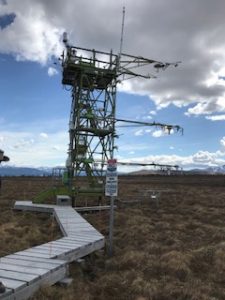
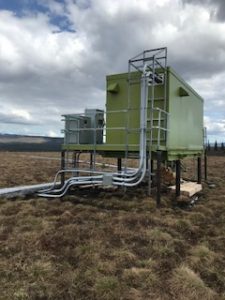
Because our class discussed a lot about atmospheric heat transportation and used the weather tower in Paxson as a practice to collect data (which the tower measure wind speed, wind direction, and temperature), it was extremely pleasing to see this on a larger scale. We had a discussion and reflection on how combining the two classes were. Although I thought that it was more biology, today’s NEON research site was an integration of what both classes learned. It was a great way to end our traveling learning course.

